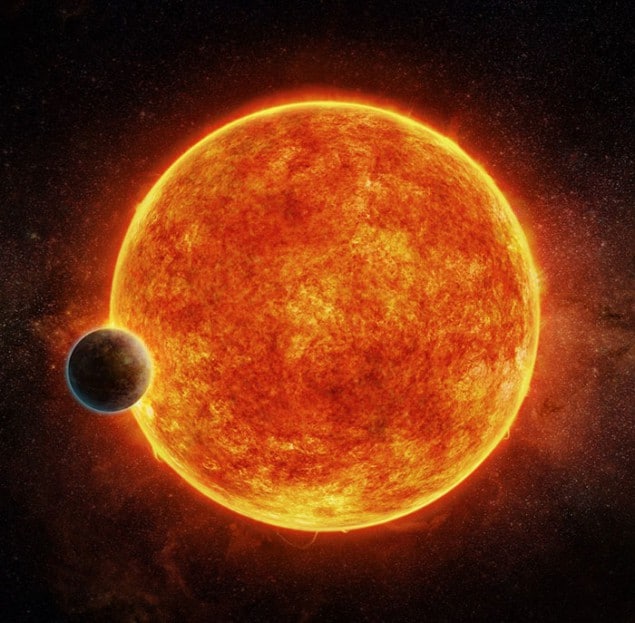
An exoplanet orbiting a nearby red-dwarf star may be the “best place to look for signs of life beyond the solar system”, according to the team of astronomers that has discovered the rocky world. The exoplanet is called LHS 1140b and is located just 39 light-years from Earth. It has a density that suggests that it has a rocky surface with iron core. LHS 1140b is also in the habitable zone of its star and the astronomers say that it could have an atmosphere.
The new exoplanet orbits LHS 1140, which is a faint red dwarf that is much smaller and cooler than the Sun. LHS 1140b was discovered by a team led by Jason Dittmann of the Harvard-Smithsonian Center for Astrophysics. The researchers used the MEarth facility in Arizona to detect dips in the starlight from LHS 1140, which occur when the exoplanet passes between the star and Earth. Then the European Southern Observatory’s HARPS instrument was used to measure the mass and density of LHS 1140b.
The exoplanet takes 25 days to orbit its star and despite being 10 times closer to LHS 1140 than Earth is to the Sun, it only receives about half the “sunlight” that Earth does. Despite this lack of stellar energy, LHS 1140b is in the habitable zone of its star, which means that it could support life.
Magma oceans
When red-dwarf stars are young they are known to emit radiation that would damage the atmosphere of an exoplanet. However, Dittmann and colleagues believe that LHS 1140b is large enough to have sustained a magma ocean on its surface for millions of years. Such an ocean could have fed steam into the atmosphere, replenishing its stock of water and ensuring that its atmosphere survived the early radiation bombardment.
“The present conditions of the red dwarf are particularly favourable – LHS 1140 spins more slowly and emits less high-energy radiation than other similar low-mass stars,” says team member Nicola Astudillo-Defru from Geneva Observatory, Switzerland.
Exciting exoplanet
Dittmann adds: “This is the most exciting exoplanet I’ve seen in the past decade. We could hardly hope for a better target to perform one of the biggest quests in science – searching for evidence of life beyond Earth.”
Astronomers will now use the Hubble Space Telescope to try to work out how much life-destroying radiation is currently being showered upon LHS 1140b. Studies using future instruments such as the Extremely Large Telescope could shed further light on the exoplanet’s atmosphere and its capacity to sustain life. LHS 1140b is described in Nature.



